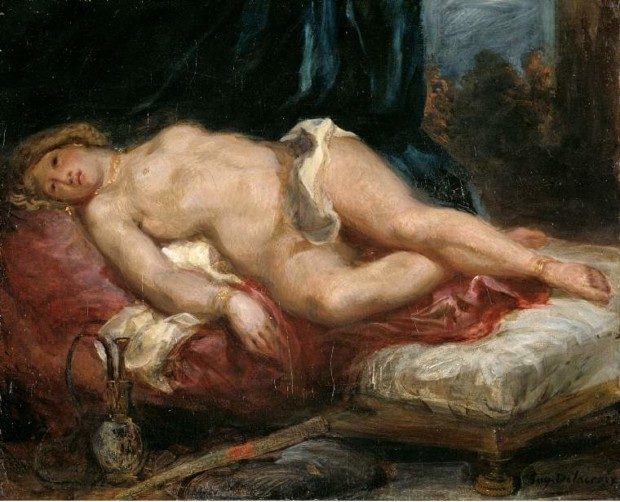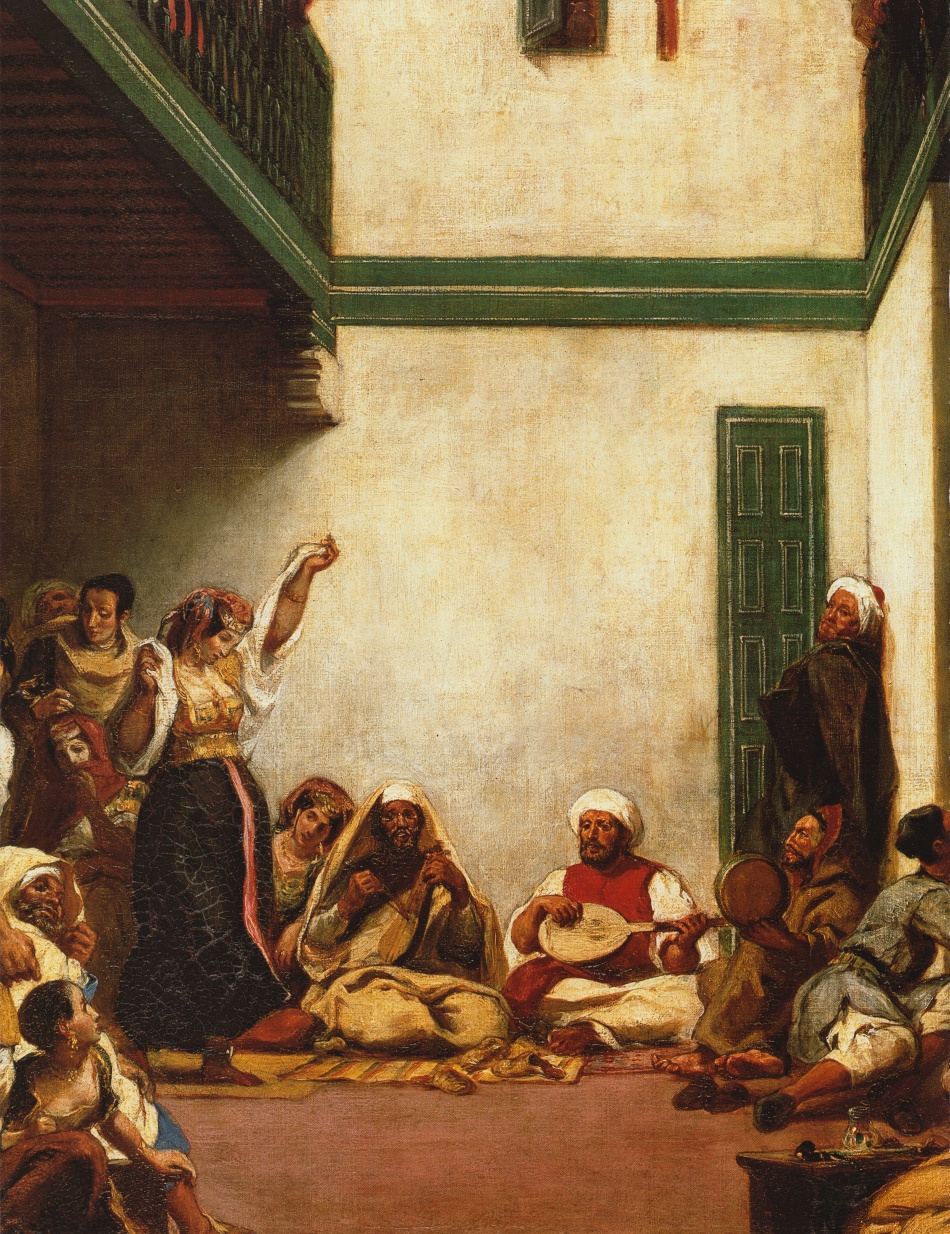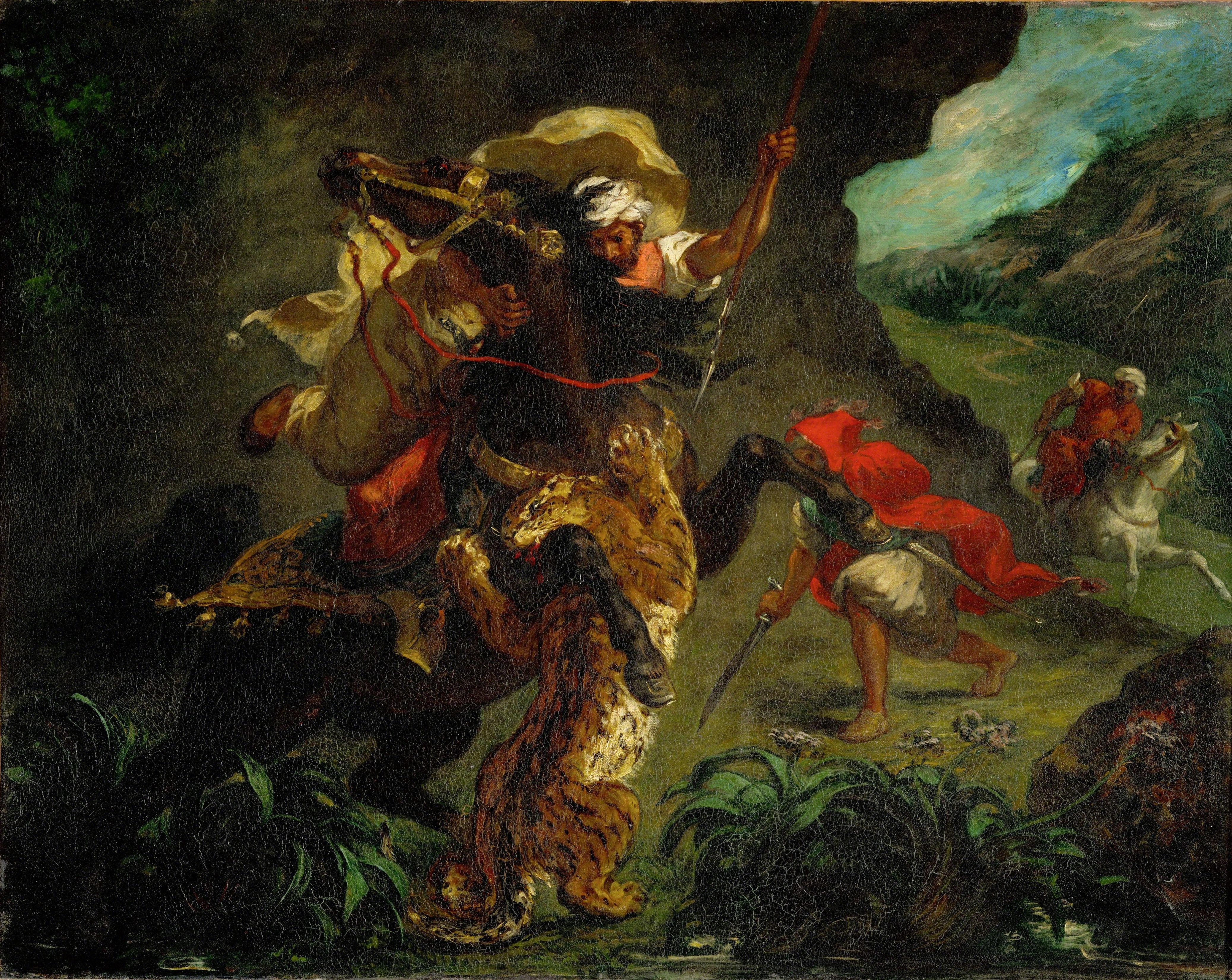Eugène Delacroix in 10 Paintings: Poetry, Passion, and Power
Early 19th-century French art was a battle between cool, crisp, precisely observed Neoclassicism and Romanticism’s passion for emotion, drama,...
Catriona Miller 3 July 2024
Eugène Delacroix was a French artist who was seen as the leader of the French Romantic school of art from the beginning of his career. 19th-century French painters, including Delacroix, were inspired by the stories about the Middle East and North Africa and depicted them in their paintings. This is referred to as Orientalism; it began when Napoleon invaded Egypt and Syria in 1798–1801. Although this invasion was unsuccessful, it stimulated great public interest in Egyptology and foreign cultures. Artists’ interest in this exotic, colorful, and mysterious world did not end until the first decades of the 20th century.
Oriental, Islamic, Hebraic and other Semitic cultures were favorite themes for paintings. As France became more engaged in North Africa, artists started visiting these places more. Typically, they showed the Orient as exotic, colorful, and sensual, though this was something of a stereotype. Lounging female slaves were particularly popular, while other scenes were seen as closely comparable to their equivalents set in modern-day or historical Europe.
Here we present a couple of Delacroix images of the Orient:

The Death of Sardanapalus was inspired by the work of another Romantic artist, the poet Lord Byron. Here we see an orgy of cruelty. The composition in all reds and golds depicts the legendary Assyrian king Sardanapalus, cruelly destroying his possessions before committing suicide. The rebels are attacking his castle and all is lost. Sardanapalus is stretched out on a luxurious bed at the summit of a huge pyre. He orders his eunuchs and palace officers to cut the throats of his women, his pages, and even his favorite dogs and horses. Note that his women are placed on a level with his horses and dogs. None of the objects that have served his pleasure are to survive. This mixture of sex, violence, inactivity, and luxury ran through much of French Orientalist painting.

An odalisque was a chambermaid or female attendant in that part of a Turkish palace where women lived, including the sultan’s palace. In popular use, the word odalisque may also refer to a mistress, concubine, or lover of a wealthy man. During the 19th century, odalisques became common fantasy figures in Orientalism and many erotic paintings from that era included them.

In 1832 Delacroix finally visited what is now Algeria (then recently conquered by the French, along with Morocco), as part of a diplomatic mission to the Sultan of Morocco. He was greatly impressed by what he saw and often compared the North African way of life to that of the Ancient Romans. After his return to France, he continued to paint people and places he had seen on his trip. Many of his scenes featured Jews or warriors on horses. Like many later Orientalist painters, it was difficult for him to sketch women as they were not willing to model. However, he was apparently able to get into the women’s quarters or harem of one house to sketch his Women of Algiers. Very few later harem scenes could claim such credibility.

While he was in Morocco Delacroix made notes of his visual memories. This painting is one of those based on those notes.
“The Jewish wedding. Moors and Jews at the entry. The two musicians. The violinist; thumb in air, the underside of the other hand very shaded, light behind, the haik around his head transparent in places; white sleeves, shadow behind. The violinist; seated on his heels and on the gelabia. The body of the guitar on the player’s knee; very dark near the waist, a red vest with brown notes, and blue behind the neck. Shirt sleeves turned back up to the biceps; green paneling beside him; a wart on the neck, short nose. Beside the violin, a pretty Jewish woman; vest, sleeves, gold and amaranthine.”

Delacroix witnessed this event through the shutters in Tangier or Meknes. The scene depicted is quite difficult to understand, but Delacroix offered this explanation in the brochure for the 1838 Salon:
These fanatics are called Issaouis, after their founder Ben Issa. At certain times of the year, they meet outside towns; then, their enthusiasm excited by prayers and wild cries, they enter into a veritable state of intoxication, and, spreading through the streets, perform a thousand contortions
,and even dangerous acts.

The artist’s journey through North Africa inspired him for life. Delacroix created a couple of paintings of hunting. In this one, he illustrates movement and violence by the use of bright, intense lighting on details selected for their significance. In particular, are see the tiger and the fabric of the clothes, animated by the rapid gestures of the men who are attacking the wild beast.
DailyArt Magazine needs your support. Every contribution, however big or small, is very valuable for our future. Thanks to it, we will be able to sustain and grow the Magazine. Thank you for your help!